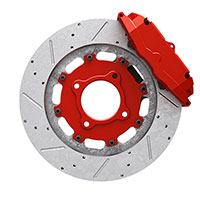Mixed Costs: 10 Examples and Definition 2024
Even if the salesperson doesn’t sell anything during the month, the company still has to pay the base salary. Mixed costs offer a variety of advantages for businesses as they help to improve cost estimation, conduct more accurate budgeting, and get better financial insights. To calculate a mixed cost, one must first determine the fixed and variable components and add them together. A salesperson’s pay structure typically has a fixed component, such as a salary, and a variable portion, such as a commission.
They are able to provide our clients with the most accurate and reliable solutions for their particular financial/accounting needs. purchased transportation For the past 52 years, Harold Averkamp (CPA, MBA) hasworked as an accounting supervisor, manager, consultant, university instructor, and innovator in teaching accounting online. For the past 52 years, Harold Averkamp (CPA, MBA) has worked as an accounting supervisor, manager, consultant, university instructor, and innovator in teaching accounting online.
Still, mixed costs can also be calculated using more complex formulas. They include the high-low method, regression analysis, and scatter graph method. They are often used to determine how a change in activity level will affect total mixed costs. Thus, the cost structure of an entire department can be said to be a mixed cost.
Understanding Mixed Costs
- Businesses can leverage more sophisticated methods such as the high-low method, regression analysis, or scatter plot technique to refine their fixed and variable components further.
- The best way to deal with mixed costs in a budget is to use a formula in place of a single number for a mixed cost, with the cost automatically varying based on a designated activity level (such as sales).
- The fixed element doesn’t change with change in activity level at all and the variable component changes proportionately with activity.
- However, it’s possible to incur additional variable charges such as overage charges based on excessive bandwidth usage.
- The fixed component of mixed costs includes expenses that do not change with the production level, such as rent, insurance, and management fees.
This graph shows that the company can’t completely eliminate fixed costs. Even if the company does sell or produce a single product, there will still be fixed costs. Since mixed costs have characteristics of both fixed and variable costs, they are usually separated into segments in order to be graphed.
In a typical cellphone billing contract, a monthly flat rate is charged. However, it’s possible to incur additional variable charges such as overage charges based on excessive bandwidth usage. We cite peer reviewed academic articles wherever possible and reference our sources at the end of our articles.
Advantages
Businesses can leverage more sophisticated methods such as the high-low method, regression analysis, or scatter plot technique to refine their fixed and variable components further. These methods offer greater accuracy in cost estimation, budgeting, and financial insight – improving overall efficiency. In simple words, mixed costs are expenses that cannot be separated into fixed and variable costs but are a combination of both. Mixed costs, also known as semi-variable costs, are business expenses that have both fixed and variable components. In simpler terms, it’s a cost that fluctuates according to the amount of production and cannot be eradicated like a fixed expense.
Related Articles
While mixed costs offer many advantages, there are some drawbacks that businesses should be aware of, including difficulty in mixed costs’ forecasting and budgeting errors. So, mixed costs are not purely fixed or variable costs but are a combination of both. Wage costs for employees who are paid a monthly salary plus commissions are a good example of mixed costs. This is a common compensation package for salesmen and sales reps. They usually receive a small base salary and commissions based on how many sales they make during the period.
Related AccountingTools Courses
Where T is the total trip cost, BF is the base fare which is the same whether you travel 0.5 km or 20 km. R is the variable charge per kilometer for distance and D represents distance in kilometers. Viktoriya Sus is an academic writer specializing mainly in economics and business from Ukraine. She holds a Master’s degree in International Business from Lviv National University and has more than 6 years of experience writing for different clients.
Some of the expenses are fixed because they do not change in total as the number of annual miles change. Some of the expenses are variable since the total amount will increase when more miles are driven and will decrease when fewer miles are driven. The variable expenses include gas, oil, tires, and some depreciation. During the month of June-2019 total fixed cost, which includes rent, depreciation, salaries, and utility expenses, comes to $ 100,000. The variable cost per unit during the same period comes to $ 10 per unit, and the number of units produced is 50,000.
To visualize the behavior of a mixed cost, it is helpful to graph at least 8 observations. Each observation’s total cost (y) is aligned with the y-axis and is also aligned with the volume amounts indicated on the x-axis. To compute the best fitting line through the graphed data, you could use a mathematical tool known as simple linear regression analysis. This will calculate the fixed expenses (a) and the variable rate (b) based on the historical observations. For example, if a company pays $1,000 in rent and $400 in utilities monthly, the total mixed cost is $1,400. In this case, rent is the fixed component, and utilities are variable (Bragg, 2019).
Going back to our example, the salary would be graphed like a fixed cost and the commissions would be graphed like a variable cost. This graphical technique simplifies complex data into manageable visuals, allowing for easy analysis and understanding of financial information. By plotting activity levels across a graph, businesses can quickly identify which parts of their costs are fixed and variable. This technique helps people comprehend how changing variables can influence outcomes accordingly. In terms of mixed costs, regression analysis can help determine how a certain change in activity level affects the total cost (White et al., 2020). Semi-variable costs have features of both fixed costs and variable costs.
Management may analyze different activity levels by manipulating each one to change the variable costs. A semi-variable cost with lower fixed costs is favorable for a business because the break-even point is lower. In the world of business, understanding cost behavior is crucial for effective financial management and decision-making. In this blog post, we will delve into the concept of cost behavior analysis, explore the different types of costs, and discuss their implications for business operations.
Viktoriya is passionate about researching the latest trends in economics and business. However, she also loves to explore different exporting invoices in bulk to xero topics such as psychology, philosophy, and more. Shaun Conrad is a Certified Public Accountant and CPA exam expert with a passion for teaching.







